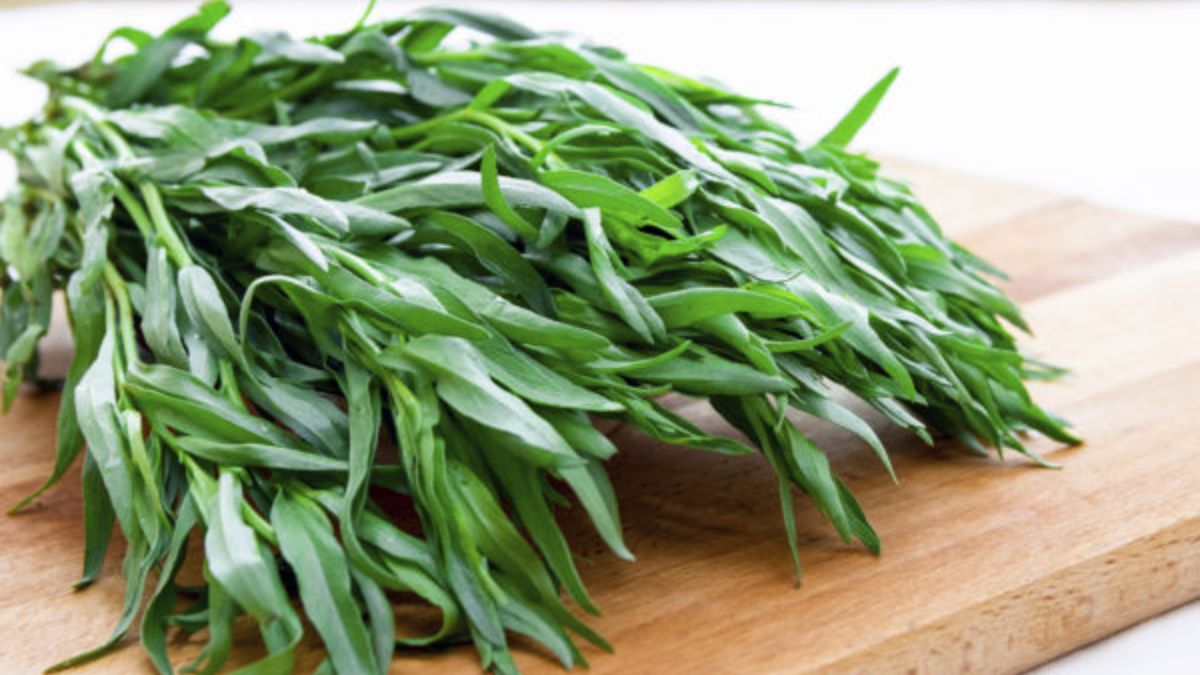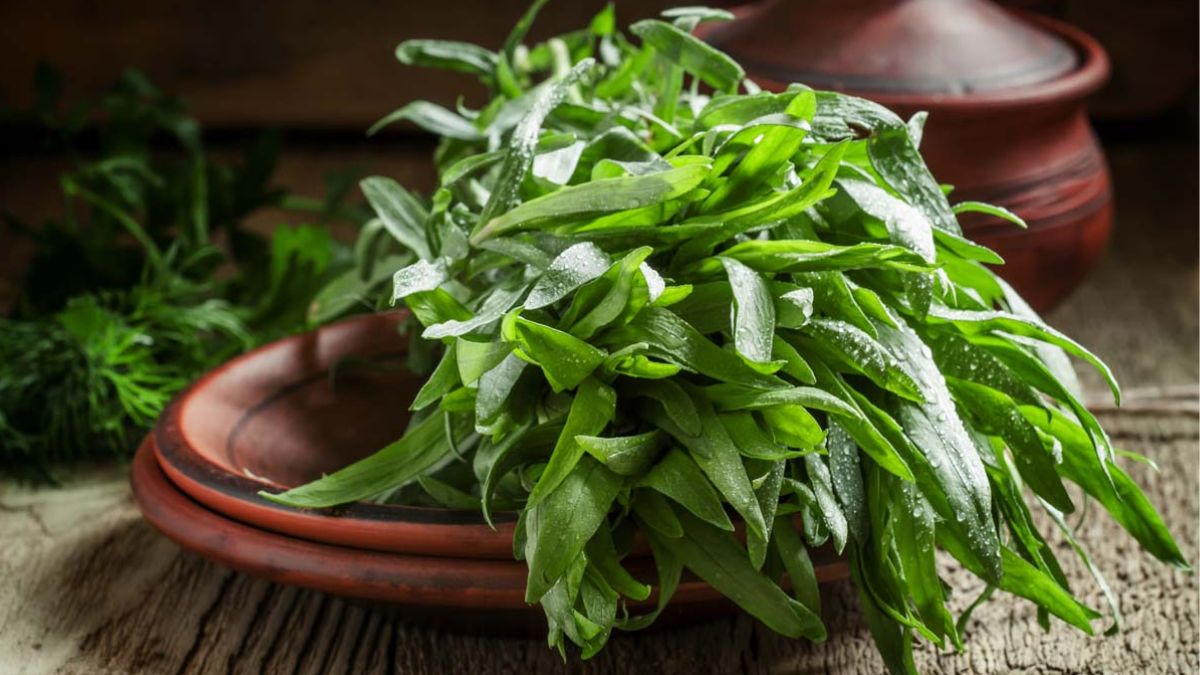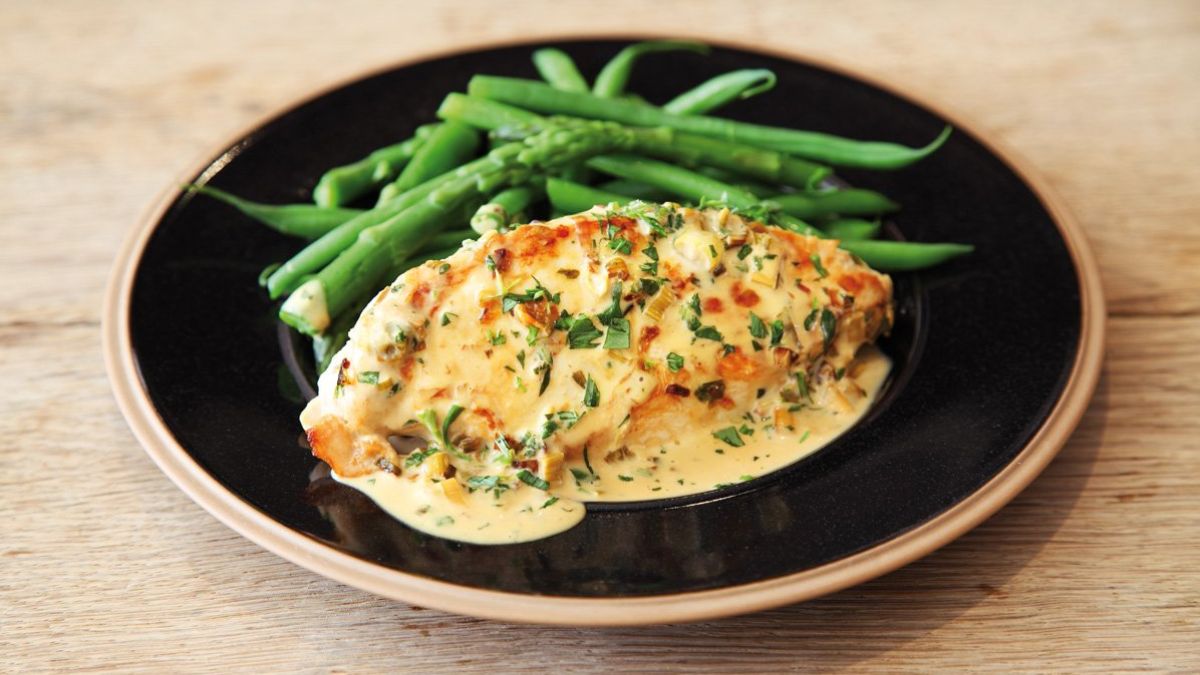Tarragon is a leafy green herb that smells very strong and tastes like licorice. It gives salad dressings, sauces, and fish and chicken dishes a fresh, spring taste and a touch of elegance. It is often used in French cooking. Tarra can be bought both fresh and dried all year long.
Tarra on is a herb that comes in three main types. Each type is used for something different. There is Russian Tarragon, which has a great smell; wild Tarragon, which is often used in traditional medicines; and French Tarragon, which is the best for cooking and can be found on spice racks worldwide.
Tarragon is so important in French cooking that it is one of the four essential fines herbes, herbs best used to flavor and season delicate dishes that cook quickly, like thin chicken, egg, and fish dishes. Along with parsley, chives, and chervil, Tarragon is a signature herb for fish and chicken. It has a lot of different smells and tastes that go well with the neutral flavors of these common ingredients.
It can be hard to describe or even understand Tarragon because it has such a complex flavor. But m st people are most likely to know the taste of Tarragon from Béarnaise sauce, a Hollandaise sauce with Tarragon added. So, If you’ve ever had a good steak at a good French restaurant, you’ve probably liked how Tarragon tastes.
What is Tarragon?
Tarragon is a herb used in cooking known for its shiny, thin leaves and strong smell. The F each type is the one most often used in cooking. Tarra is used in a lot of French dishes, like Béarnaise sauce. Its mild flavor goes well with fish, chicken, and eggs. It is called “the king of herbs” in France because it can make a dish taste better. It is one of the four herbs in the French blend fines herbes, including parsley, Tarragon, chervil, and chives.
Tarragon is a perennial plant, which means that if you plant it, it will come back every year. It is in the Artemesia genus with other greens that taste like licorice, like the one used to make the French aperitif absinthe. The s ems are tough and woody, and the long, thin leaves have points at the ends. Tarra on is a herb often used in food, and it has long, green, papery leaves that smell nice and rough. Tarra can be used fresh or dried in a lot of different ways.
The strong taste of Tarragon comes from a chemical called estragole. It is a chemical that makes herbs like fennel and anise taste floral. Esta ole comes from estragon, which is the French word for Tarragon. Tarra grows wild in North America, Europe, and Asia. What does Tarragon have in common with a daisy, a dandelion, a marigold, or a chrysanthemum? You m might be surprised to learn that they are both in the sunflower family of plants. You c n pick Tarragon from the wild or grow it in your garden. Its h rest time is between the end of spring and the beginning of summer. A plant of Tarragon can live for three years.
Varieties
The most common kind of Tarragon is French, but there are other kinds, such as Spanish (also called Mexican) Tarragon and Russian Tarragon. Mint tarragon from Mexico tastes much like French Tarragon but is a little richer, and it al o has small golden flowers. Russi n Tarragon looks a lot like French Tarragon, but its taste is stronger and more bitter, and most of the time, it is used to flavor drinks.
Fresh vs. Dried
Like many other herbs, fresh Tarragon is very different from dried Tarragon. This difference is even clearer, though, because Tarragon is a delicate herb that becomes more volatile as it dries. Many chefs won’t use dried Tarragon because it lacks the fine, delicate qualities that make fresh Tarragon so appealing. If you want to be dried instead of fresh, use one teaspoon for one tablespoon. You c n also dry fresh Tarragon at home, either slowly in a warm oven (no more than 200 F) or a dehydrator.
What does it Taste Like?
Whether they like the taste of licorice, most people either love or hate Tarragon. But t is herb tastes like more than just anise because it has a complex flavor. It has hints of vanilla, mint, pepper, and eucalyptus, which makes it different from other foods that taste like licorice, such as fennel. On the other hand, the French variety is mild and brings together these different flavors to make an elegant and delicate herb.
The herb for spring is Tarragon. Tarra has a mild but distinct flavor that goes well with spring foods like salmon, chicken, veal, rabbit, eggs, and young vegetables like artichokes, fava beans, asparagus, and carrots. Tarra on is a leafy green herb that smells very strong and tastes like licorice. It gives salad dressings, sauces, and fish and chicken dishes a fresh, spring taste and a touch of elegance. It is often used in French cooking.
How to Cook with Tarragon?
In cooking, you used fresh Tarragon and dried Tarragon in different ways. Before cooking with fresh leaves, you need to rinse them and pat them dry. Then, they are taken off the stem by simply running your fingers along the stem from the top down. You c n use the leaves whole or chop them up, but be careful because they are easily damaged. Fresh Tarragon should be used raw or added near the end of cooking. If it is cooked for too long, the flavor will become bitter. Dried Tarragon is added to recipes early on, but it won’t have the same effect as fresh because its flavor has changed.
Fresh Tarragon can be used in chicken and potato salads, salad dressings, and sauces, and it can be cut into small pieces and added to a green salad or used as a garnish. Tarra is also a great herb to use when making vinegar with a flavor.
Substitutions
If a recipe calls for fresh Tarragon and you don’t have any, there are a few things you can use instead, but the result won’t be the same. If the licorice flavor is important, use chervil or fennel fronds, or a pinch of anise seed or fennel seed, for every tablespoon of fresh Tarragon that is called for. If you want a different fresh herb, you can swap it for Basil, dill, or marjoram. Even though those herbs won’t give your food the licorice flavor that Tarragon is known for, they should still work pretty well in whatever you’re making. If you need a replacement for dried Tarragon, dried fines herbes and anise or fennel seed will work.
Where to Buy Tarragon?
Dried Tarragon can be found in the spice section of most grocery stores, and it’s also sold by many major retailers online. Fresh Tarragon may be harder to find than herbs like parsley, chives, dill, and cilantro, which are more common. You will find it in the produce section in bunches or clamshells if it is sold in grocery stores. You m might also see it at your local farmers’ market in the spring and early summer. You c n also buy tarragon plants in pots from gardening supply stores or even online. Put t e pot in a sunny spot and water it often. The ant is thought to have come from Siberia, and the F variety is grown in North America and Europe, especially in France and Spain.
Storage Tip
You can keep fresh tTarragonout on the counter or in the fridge. Put t dragon stems in a small glass of water and leave for about a week on the counter. Keep the herb in the fridge if you want it to last longer. Rinse and dry fresh Tarragon, wrap it in a damp paper towel, and put it in an airtight container. It wi l keep in the refrigerator for about two weeks. Fresh Tarragona also is frozen for up to five months. Most grocery stores have fresh Tarragon in the produce section. Look for leaves with few or no brown spots and bright green color. When you get it home, wrap it loosely in a paper towel and put it in the fridge until you are ready to use it.
In the market’s spice section, you can find dried tarragon leaves or ground taTarragonLike ll spices, which should be kept in a cool, dry cupboard. You c n also freeze taTarragonthough it may change its texture when frozen. Cooks use different techniques to freeze this herb. You c n cut taTarragonnto pieces and put them in an ice cube tray. Then, you can fill the tray with water and let it freeze. Or, y you can put the Tarragon in a plastic bag, squeeze out the air, and freeze it that way.
What are the Types of Tarragon?
Three Types of Tarragon
Russian Tarragon- This plant grows in Central Asia and Russia. It was much taller than other types of taTarragonnd gives off more seeds. But Is leaves aren’t very good for cooking. This type of taTarragonrows well in harsh climates and has paler, narrower, and rougher leaves. It’s also hardy and easy to grow. It can be used to grow new plants from its seeds.
Russian taTarragonastes bitter, but its other tastes aren’t very interesting. Even worse, the herb’s flavor can easily be lost at high temperatures, making it even less useful in cooking. But it is very useful for making drinks taste better, making vinegar, and putting on salads. Most f the time, people think this Tarragon is better than it is. So, w en you go shopping for taTarragonyou should be careful. Find out how to buy the right Tarragona by reading the rest of the post.
French Tarragon- The most common type is French taTarragonMany people think this type of taTarragoname is from Western Asia. It quickly caught people’s attention in medieval Europe and has been an important part of Western food. The F each love it with all their hearts. In their many recipes, many French cookbooks talk lovingly about the herb. It’s not crazy to think that the use of taTarragonnd the rise of French food have something to do with each other.
There’s a good reason why I think that. Frenc taTarragonmells and tastes great. Since this Tarragona is more estragole than other herbs, you can expect it to be stronger. Also, this herb’s flavor improves when it is kept for a long time or heated. It al o tastes the most like fennel seeds because of their strength. It’s o surprise that chefs and foodies use French Tarragon in many dishes.
But taTarragonrom France looks much like taTarragonrom Russia, which isn’t as good. So be careful who you buy your taTarragonrom, or you might get a nasty surprise. French Tarragon is a delicate plant that will grow in your garden if you take care of it. Also, seeds can’t be used to spread it. To gr w a new plant, you must cut a stem or root from an old one.
Mexican Tarragon- Is Spanish or Mexican taTarragonhe same thing as taTarragonEven though its stem and leaves look like taTarragonits, flowers are very similar to marigolds. It comes from North and Central America, another thing to consider. But M Mexican Tarragona all the things that make the plant smell good. Flora, grassy, and a strong, refreshing taste like licorice, mint, and anise?
Because they taste so much alike, you can use Mexican taTarragonnstead of French taTarragonBut, t e truth is that the first one keeps its taste even better. It’s easy to add to food, and you don’t have to worry that the heat will change its unique taste. You c n grow Mexican taTarragonrom seeds or cuttings. It’s easy to take care of, and the bright gold flowers will look great in your garden.
Conclusion
Tarragon is a popular perennial herb often used in cooking in France and England. There are many kinds of taTarragonbut they all belong to the Compositae or Asteraceae (sunflower) family and have a flavor that is a mix of licorice, lemon, and Basil. Basil Leaves and Basil has a finish that tastes like anise or licorice. Like Tarragon is bright green and herbaceous. You c n use it the same way you would taTarragonJust make sure to slice the Basil thinly to make it look like thin tarragon leaves.


